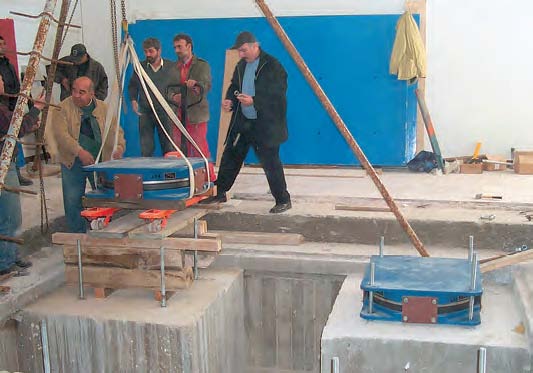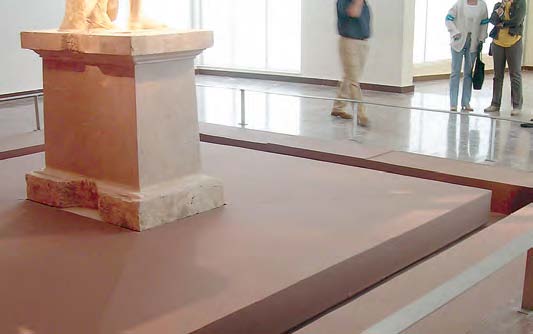
New protective devices called friction pendulum bearings have recently been installed under one of ancient Greece’s most famous works of art: the marble statue of the god Hermes carved by the fourth-century B.C. sculptor Praxiteles.
The 7-foot-tall statue, the only surviving work by Praxiteles, shows Hermes resting against a tree and holding the infant Dionysus. It was discovered in 1877 standing upright on its base, buried beneath Olympia’s Temple of Hera, and is now on display in the Archaeological Museum at Olympia.

Since mainland Greece is periodically hit by earthquakes, conservators have searched for ways to protect valuable works of art. Engineers at the State University of New York at Buffalo’s earthquake engineering laboratory conducted tests that led to the development of custom-made bearings, which were installed beneath the concrete base on which Hermesnow standss. The bearings allow the statue to swing gently from side to side like a pendulum, rather than to break or topple over, when subjected to extreme seismic pressures.
Already a library member? Log in here.
Institution user? Log in with your IP address.

